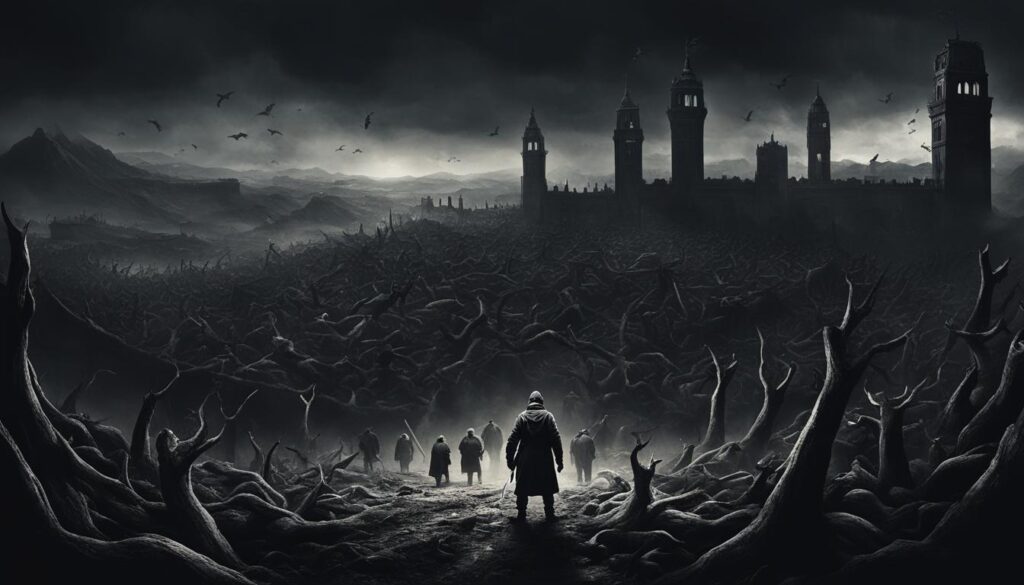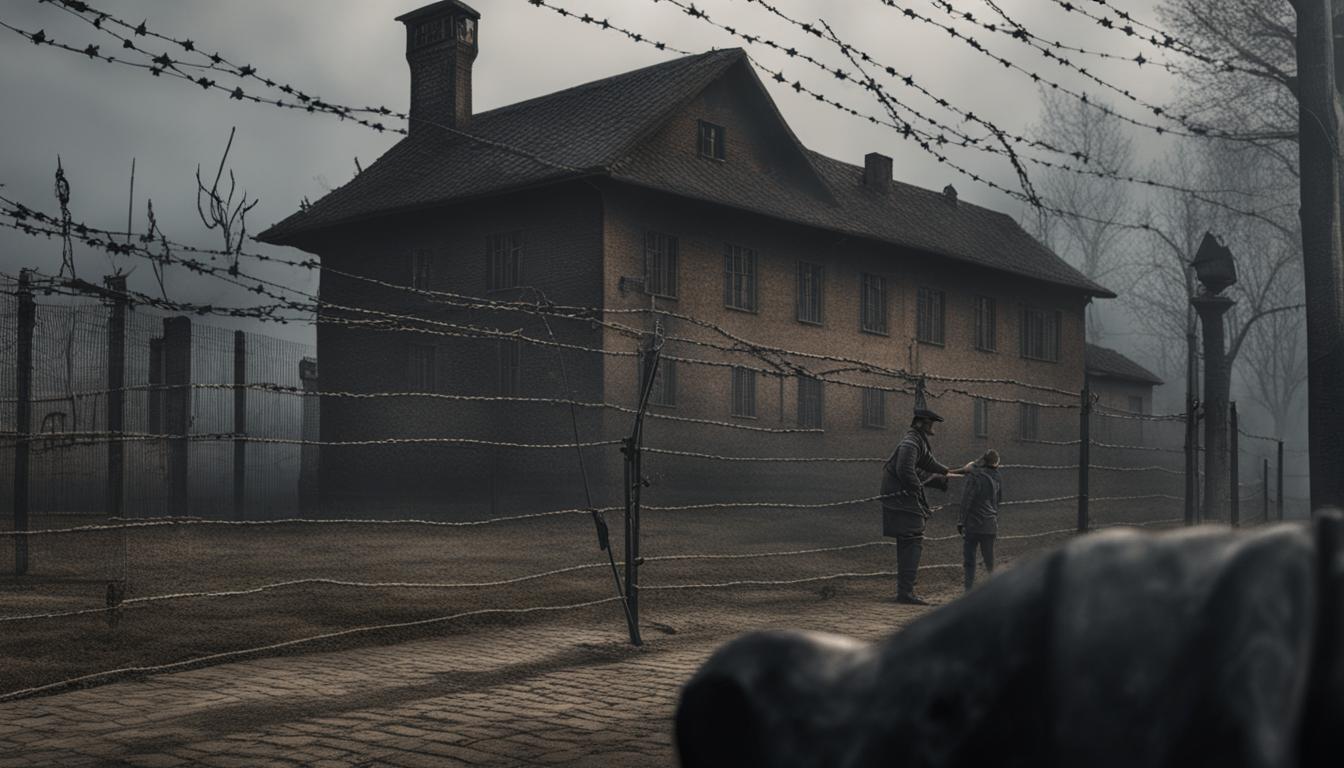If you’re looking for a gripping audiobook to add to your collection, Heather Morris’ “The Tattooist of Auschwitz” should be at the top of your list. In this audiobook review, we’ll delve into the captivating narrative, the author’s exceptional storytelling, and the enduring themes of love and survival.
Heather Morris, an Australian author, penned “The Tattooist of Auschwitz” as a fictionalized retelling of Lale Sokolov’s experiences as a Slovakian Jew imprisoned in Auschwitz during World War II. This audiobook adaptation, narrated by British actor Richard Armitage, encapsulates the harrowing story and transports listeners to the concentration camp, providing a visceral understanding of the horrors faced by prisoners.
Overview of “The Tattooist of Auschwitz”
Written by Heather Morris, “The Tattooist of Auschwitz” is a historical fiction novel based on the true story of Lale Sokolov, a Slovakian Jew who was imprisoned in the Auschwitz-Birkenau concentration camp during World War II.
The story is set in the harrowing environment of the concentration camp, where Lale, a tattooist, meets Gita, a fellow prisoner. Despite the overwhelming odds stacked against them, the two form a deep bond, ultimately deciding to marry and fight for survival amidst the horrors of Auschwitz.
The novel’s historical context is centered on the Nazi occupation of Europe during World War II, specifically focusing on the experiences of prisoners in Auschwitz. Morris’ book presents an emotional account of the Holocaust, delving into themes of love, hope, and resilience.
Main Characters in “The Tattooist of Auschwitz”
| Character Name | Role |
|---|---|
| Lale Sokolov | Protagonist; Tattooist |
| Gisela “Gita” Furman | Protagonist; Lale’s love interest |
| Cilka Klein | Secondary character; fellow prisoner and friend of Gita |
| Commandant | Antagonist; leader of the concentration camp |
“The Tattooist of Auschwitz” portrays a diverse array of characters, from the resilient and determined Lale to the morally compromised Commandant. Throughout the novel, each character’s desires, motivations, and personalities are intricately woven into the story’s intricate plot.
In the next section, we provide a plot summary of “The Tattooist of Auschwitz,” detailing the book’s major events and turning points.
Plot Summary
In “The Tattooist of Auschwitz,” Lale Sokolov, a Slovakian Jewish man, is transported to Auschwitz in 1942, where he is assigned the job of tattooist, permanently marking prisoners with their identification numbers. There, he meets Gita, a fellow prisoner, and they fall in love despite the circumstances. The novel follows their journey as they struggle to survive amidst the horrors of the concentration camp.
Lale uses his privileged position as the tattooist to obtain food and medicine for Gita and other prisoners. They experience moments of hope, kindness, and love, but they also encounter cruelty, violence, and death. Amidst the daily struggle for survival and the threat of imminent execution, Lale and Gita’s love endures, giving them the strength to keep going.
In the final moments of the war, Lale and Gita are separated, but they are eventually reunited, and the novel ends with them starting a new life together.
The plot of “The Tattooist of Auschwitz” is a poignant testament to the resilience and bravery of those who survived the atrocities of the Holocaust. It is a story of love and survival amidst unimaginable horrors, and it offers a powerful portrayal of the indomitable human spirit.
Characters in “The Tattooist of Auschwitz”
Heather Morris masterfully created a compelling cast of characters in “The Tattooist of Auschwitz,” each with unique stories and motivations that drive the narrative forward. At the center of the story is Lale Sokolov, the titular tattooist, whose charm and empathy endear him to both fellow prisoners and his SS captors. His love interest, Gita, is a strong-willed young woman who proves herself to be Lale’s match in resilience and courage.
Other notable characters in the book include:
| Character | Description |
|---|---|
| Pepan | A fellow prisoner who becomes one of Lale’s closest friends and confidants. |
| Miska | An elderly prisoner who takes Lale under his wing and teaches him how to survive in the camp. |
| Dr. Pachter | An Auschwitz physician who becomes an unlikely ally to Lale and Gita. |
Each character in “The Tattooist of Auschwitz” brings a unique perspective to the story, showcasing the diverse experiences of those who suffered through the Holocaust. Through Morris’ vivid storytelling, readers gain a deeper understanding of the resilience and humanity that can exist in the darkest of circumstances.
Narration and Performance
In the audiobook adaptation of “The Tattooist of Auschwitz,” the narration and performances of the voice actors are a standout feature. The text is brought to life through an emotional and powerful performance that effectively captures the mood and atmosphere of the story. The voice actors’ delivery is crisp, clear, and thoroughly engaging, making it easy to follow along with the plot and characters.
One thing that stands out is the use of accents by the voice actors to differentiate between characters and to convey a sense of place and time. This gives the audiobook more depth and makes it feel like the listener is right there in Auschwitz experiencing the story firsthand.
Overall, the narration and performance of “The Tattooist of Auschwitz” are excellent, heightening the emotional impact of the story and delivering a truly immersive experience for listeners.
Writing Style and Language
Heather Morris’ writing style and language choices in “The Tattooist of Auschwitz” play a significant role in the emotional depth of the story. Her prose is concise and vivid, capturing the harrowing reality of life in a concentration camp while also highlighting the strength of the human spirit.
Morris’ use of simple language effectively conveys the starkness and brutality of the concentration camp setting. Her descriptions of the tattoos the prisoners receive are particularly potent, as they represent the loss of identity and the dehumanizing effects of the Nazi regime.
At the same time, Morris skillfully employs more poetic language to highlight the importance of love, hope, and resilience in the face of unimaginable horror. The romance between the main characters, Lale and Gita, is depicted with a tenderness that stands in stark contrast to the surrounding violence, further emphasizing the power of the human connection.
The result is a narrative that is both heartbreaking and uplifting, with language that underscores the indomitable nature of the human spirit.
| Pros | Cons | |
|---|---|---|
| Writing Style | An immersive and emotionally resonant writing style that effectively captures the horrors of Auschwitz and the resilience of the human spirit | The simplicity of the language occasionally leans towards being prosaic, lacking the grandeur and depth of other works of Holocaust literature |
| Language | The use of simple, clear language underscores the starkness of life in Auschwitz and the way that prisoners were dehumanized by the Nazi regime | While effective at conveying the harsh realities of life in the camp, the simple language occasionally lacks the nuance and depth of more complex prose |
Themes and Messages
“The Tattooist of Auschwitz” is a poignant depiction of love, perseverance, and hope amidst the unimaginable horrors of the concentration camp. One of the central themes of the book is the power of love to overcome even the most harrowing of circumstances. The relationship between the main characters, Lale and Gita, illustrates this message with stark clarity, as they move through the darkness of Auschwitz, clinging to each other and finding solace in small moments of tenderness and human connection.
Another message conveyed in the book is the incredible resilience of the human spirit. Lale’s determination to survive and protect his loved ones, despite the extreme challenges he faces, serves as a testament to the strength of the human will and the capacity to endure unimaginable suffering. Additionally, the book explores themes of sacrifice, redemption, and the complexities of morality in times of war.
Heather Morris skillfully weaves these themes together, creating a narrative that is both heart-wrenching and inspiring. Through the lens of Lale’s experiences, readers come to understand the magnitude of the atrocities committed at Auschwitz, while also bearing witness to the extraordinary acts of compassion and humanity that persisted even in the darkest of times.
“Lale felt a joy bubbling up inside him; he was still alive and he was acutely aware that in this place, where each day was a struggle to survive, a day without a beating was a day worth celebrating.”
Overall, “The Tattooist of Auschwitz” is a powerful testament to the indomitable human spirit and the enduring power of love. By exploring these themes with honesty, empathy, and compassion, this book offers a moving tribute to the millions of lives lost in the Holocaust and a reminder of the importance of bearing witness to stories of human resilience and survival.

Historical Accuracy and Research
“The Tattooist of Auschwitz” has been praised for its historical accuracy and detailed research on the Holocaust. Author Heather Morris conducted extensive interviews with Lale Sokolov, the real-life protagonist of the book, to ensure that his story was depicted with authenticity and care.
The book provides a rare firsthand account of life in Auschwitz, and many readers have commented on its vivid portrayal of the horrors of the Holocaust. Morris’ research shines through in her attention to detail, bringing to life the everyday struggles and triumphs of the prisoners in the camp.
However, some critics have questioned the accuracy of certain details in the book, particularly regarding the timeline of events and the portrayal of certain characters. It’s important to note that while “The Tattooist of Auschwitz” is based on real people and events, it is still a work of fiction and should be approached as such.
“Morris’ novel is sensitively wrought in spite of the grim setting and the unspeakable horrors that take place within it. Her research ensures that this novel is both emotionally and historically accurate.”
Critical Reception
“The Tattooist of Auschwitz” has received mixed reviews from critics and readers alike, with some reviewers praising Morris’ storytelling and others questioning the accuracy and authenticity of the narrative. However, despite the criticisms, the book has left a lasting impact on many readers and has taken a prominent place in the genre of Holocaust literature.
“Morris’ debut novel is based on a true story and filled with powerful details of life in Auschwitz. While some readers have criticized the book for its simplified narrative structure and lack of historical accuracy, others have praised it for its emotional impact and readability.”
– Publishers Weekly
Some readers have also noted the importance of “The Tattooist of Auschwitz” in shedding light on the experiences of those who lived and suffered in concentration camps, and in preserving the memory of those who perished during the Holocaust.
Comparison to Other Holocaust Literature
“The Tattooist of Auschwitz” stands out for its unique approach to portraying the experiences of those who lived through one of the darkest periods in human history. While other notable works of Holocaust literature, such as “Night” by Elie Wiesel and “Schindler’s List” by Thomas Keneally, focus on the atrocities and suffering of the victims of the Holocaust, “The Tattooist of Auschwitz” emphasizes the power of love and human connection in the face of unimaginable horror.
In contrast to “Night,” which depicts the dehumanizing conditions of the concentration camps, and “Schindler’s List,” which tells the story of one man’s heroism in saving Jews from the gas chambers, “The Tattooist of Auschwitz” paints a more nuanced and optimistic picture of life in Auschwitz, highlighting the resilience, resourcefulness, and courage of those who managed to find hope and love amidst the brutality.
However, some critics argue that Morris’ focus on the love story between Lale and Gita trivializes the atrocities committed against the Jewish people and ignores the larger historical context of the Holocaust.
“The Tattooist of Auschwitz” versus “Night” and “Schindler’s List”
| Book Title | Approach | Themes |
|---|---|---|
| The Tattooist of Auschwitz | Focused on the love story of two prisoners amidst the horrors of the concentration camp | Love, survival, hope |
| Night | Depicts the dehumanizing conditions of the concentration camps through the eyes of a young Jewish boy | Innocence, loss of faith, inhumanity |
| Schindler’s List | Focused on the story of a German businessman who saved the lives of over one thousand Jewish people from the gas chambers | Heroism, sacrifice, redemption |
Overall, “The Tattooist of Auschwitz” provides a unique and deeply moving perspective on the Holocaust, offering a powerful testament to the strength of the human spirit in the face of unimaginable trauma. While its focus on the love story between Lale and Gita has been a subject of debate among critics and readers, there is no denying the impact and importance of Morris’ work in the wider body of Holocaust literature.
Impact and Legacy
The impact and legacy of “The Tattooist of Auschwitz” are vast and far-reaching. Since its publication in 2018, the book has captivated readers worldwide and has been translated into numerous languages.
One of the most significant impacts of the book is its contribution to Holocaust education and remembrance. By presenting a personal and emotional account of life in Auschwitz, “The Tattooist of Auschwitz” has played an essential role in ensuring that the stories of those who suffered during the Holocaust are not forgotten.
The book’s success has also led to its adaptation into other media forms, including a stage play and a film, which has further expanded its reach and impact. The film adaptation of “The Tattooist of Auschwitz” is currently in development, and Heather Morris, the author of the book, is heavily involved in the production.
The legacy of “The Tattooist of Auschwitz” can be seen in the numerous positive reviews it has received from readers and critics alike. The book has been praised for its powerful storytelling and emotional impact, and it has become one of the most popular and widely-read books about the Holocaust in recent years.
Audiobook Format and Accessibility
In today’s fast-paced world, audiobooks offer a convenient way to enjoy literature while multi-tasking. “The Tattooist of Auschwitz” is no exception, as its gripping narrative lends itself well to the audiobook format. The audiobook version of the novel is narrated by Richard Armitage, whose expressive and emotive voice draws the listener into the heart-wrenching story.
In terms of accessibility, “The Tattooist of Auschwitz” audiobook is available on multiple platforms, including Audible, Google Play, and Apple Books, making it widely accessible to those with different devices and operating systems. Moreover, the audiobook format caters to readers who may have difficulty reading print books due to visual or learning impairments, ensuring that the story of “The Tattooist of Auschwitz” can reach a wider audience.
The audiobook edition of “The Tattooist of Auschwitz” also offers the advantage of listening to an expertly crafted performance. As a listener, one can appreciate the nuances that a skilled voice actor such as Richard Armitage brings to the characters and their interactions, heightening the emotional intensity of the story.
Including an image of the book cover or audiobook format may add a visual component to the article.
Personal Reflection and Recommendation
As I listened to “The Tattooist of Auschwitz,” I was swept away by its poignant narrative and vivid portrayal of life in a concentration camp. The story of Lale and Gita’s courage, love, and survival left a lasting impression on me, and I found myself reflecting on their experiences long after I finished the audiobook.
I highly recommend “The Tattooist of Auschwitz” to anyone looking for a powerful and moving account of the Holocaust and the strength of the human spirit. Heather Morris’ masterful storytelling, combined with the exceptional narration and performance of the audiobook, make for an unforgettable listening experience.
Whether you are a history enthusiast, a fan of poignant love stories, or simply looking for an enlightening and inspiring listening experience, “The Tattooist of Auschwitz” is a must-read. It reminds us of the resilience of the human spirit even in the darkest of times and pays tribute to the millions who lost their lives during the Holocaust.
Conclusion
Overall, “The Tattooist of Auschwitz” delivers a poignant and emotionally-charged narrative that captures the indomitable human spirit amidst the horrors of the Holocaust. Heather Morris’ writing transports readers into the depths of Auschwitz and portrays the power of love and survival in a time of great despair.
The audiobook adaptation, narrated by Richard Armitage, further amplifies the impact of the story, with his exceptional performance bringing the characters and their experiences to life with vivid detail.
While some critics have criticized the book for its historical inaccuracies and literary style, its universal themes of love, perseverance, and hope have resonated with readers worldwide, making it a bestseller and a popular choice for book clubs and reading groups.
As a reviewer, I highly recommend “The Tattooist of Auschwitz” to anyone interested in powerful and captivating historical fiction, as it offers a unique and unforgettable perspective on the Holocaust.



